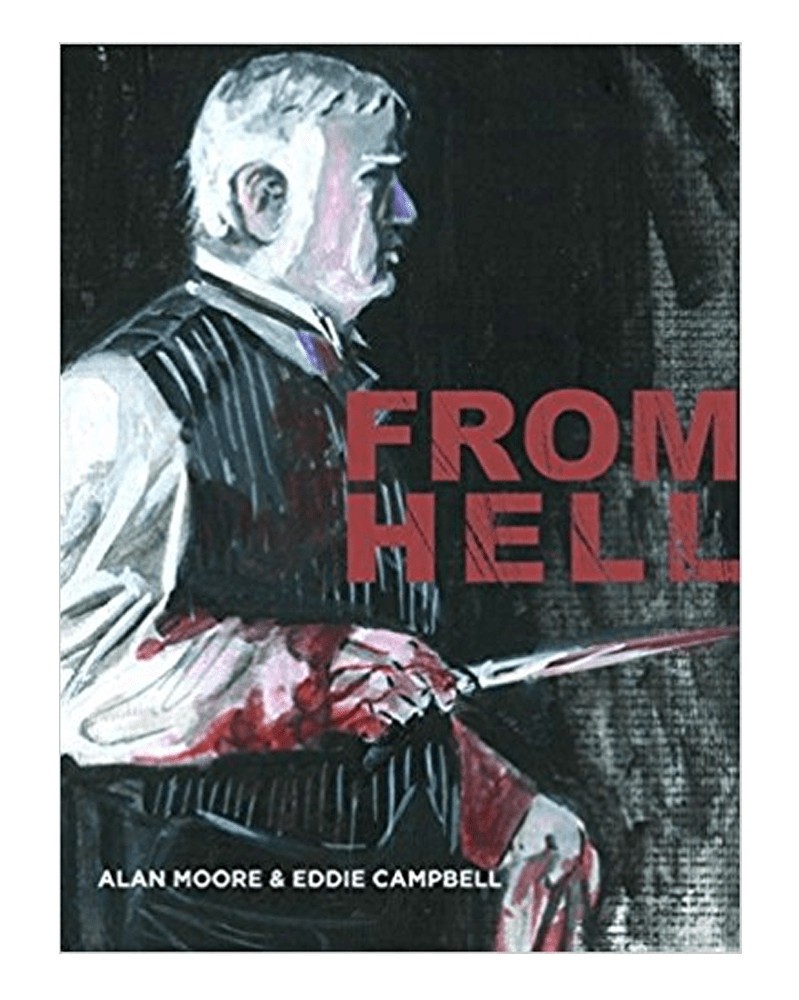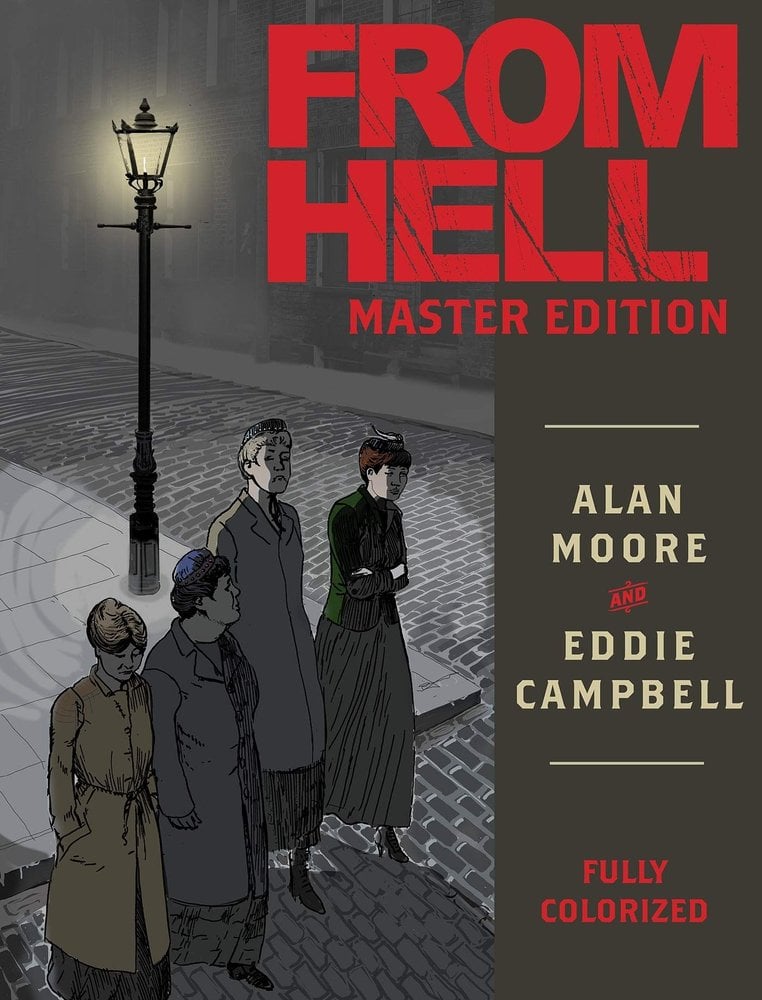
His clinical designs extend beyond his victims to the city itself, the cartography of London his personal anatomical atlas with Hawksmoor’s churches as vital organs. When dealing with his ‘objects of pity’, we witness extreme paternalism and patriarchal supremacy. This fictional Gull goes about his business with procedural detachment, devoid of consent or dignity.

The reader is exposed to images of clinical callousness, human debasement and anatomical defilement along with text that casually utilises medical terminology, articulating the power differential physicians hold over their patients. It is difficult not to examine its pages without the scrutinisation and mapping of the human object described by Foucault in his book The Birth of the Clinic. It is an uncomfortable experience, not only because of the depictions of sordid violence and ritualistic mutilation but the sangfroid clinical fashion by which it occurs.

Renowned for its grimy and bleak Victorian black and white aesthetic, it has recently been published in a new Master Edition revised by Campbell himself ‘for color, clarity, and continuity’.Įngaging with From Hell from the perspective of a GP, one feels compelled to reflect on certain issues with a different perspective to the casual reader. His fictionalised involvement forms the basis of writer Alan Moore and illustrator Eddie Campbell’s celebrated and (highly) graphic novel From Hell.

1 It remains intriguing, particularly within the medical community, that Gull was one of the numerous suspects implicated with the notorious and unsolved Whitechapel murders ascribed to Jack the Ripper. He is on Twitter: ir William Gull was a prominent Victorian era physician who amongst many contributions to clinical medicine is credited with the classic description of anorexia nervosa and the aetiology of myxoedema. Sati Heer-Stavert is a GP with an interest in philosophy.


 0 kommentar(er)
0 kommentar(er)
